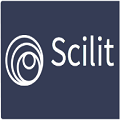Navigating the Transformation: HRM and Banking 5.0
DOI:
https://doi.org/10.48001/jbmis.2024.si1008Keywords:
Banking 5.0, human resource management, reskiling, AI, automation, sustainability, human-machine, collaboration, organizational transformation, fintech, digital bankingAbstract
As the financial landscape undergoes a profound metamorphosis towards Banking 5.0, characterized by hyper-connectivity, pervasive AI, and a renewed focus on sustainability, Human Resource Management (HRM) finds itself at a pivotal crossroads. This article delves into two critical imperatives for HRM within this transformative era: workforce transformation and seamless human-machine collaboration.
Workforce transformation necessitates a delicate rebalancing act. Strategic streamlining and capital integration must coexist with investments in reskilling and upskilling initiatives to ensure a future-proof talent pool attuned to the demands of Banking 5.0. This necessitates navigating the intricate interplay between automation's efficiency and the irreplaceable value of human ingenuity, adaptability, and creativity. Human-machine collaboration emerges as the cornerstone of success in Banking 5.0. By maximizing the complementary strengths of humans and machines, Banking 5.0 unlocks unparalleled potential for innovation, personalized customer experiences, and enhanced productivity.
This article offers HR professionals and banking leaders a practical roadmap for navigating this pivotal transition. It proposes actionable strategies for workforce transformation, human-machine collaboration implementation, and the cultivation of a future-proofed talent pool. By embracing these imperatives, financial institutions can not only survive but thrive in the new financial era, shaping a more sustainable, efficient, and human-centred future for Banking 5.0
Downloads
Published
How to Cite
Issue
Section
License
The copyright in this website and the material on this website (including without limitation the text, computer code, artwork, photographs, images, music, audio material, video material and audio-visual material on this website) is owned by QTanalytics India (Publications) and its licensors.










 qtanalyticsindia@gmail.com | Phone: +91-9458270556 | URL:
qtanalyticsindia@gmail.com | Phone: +91-9458270556 | URL: 
